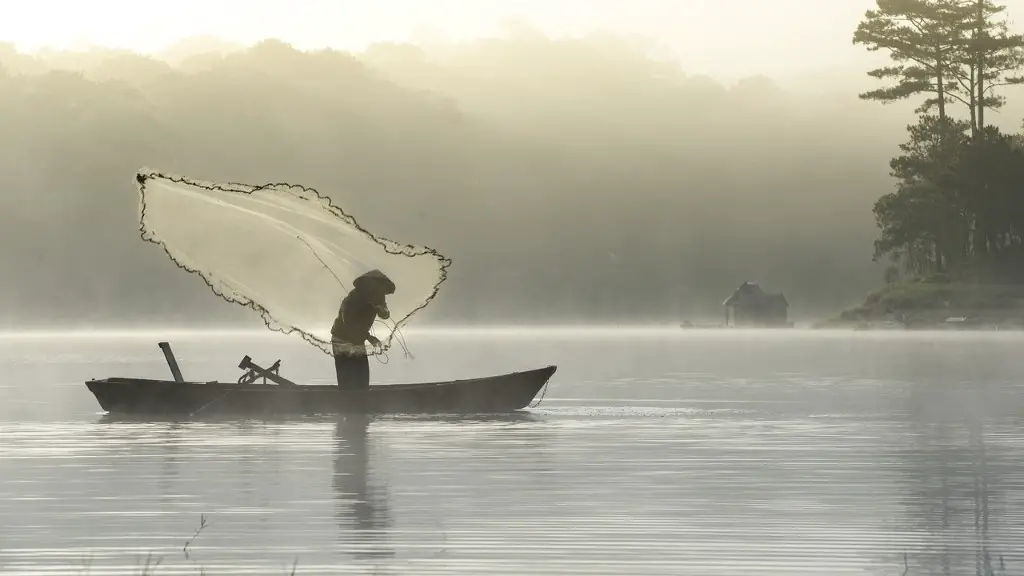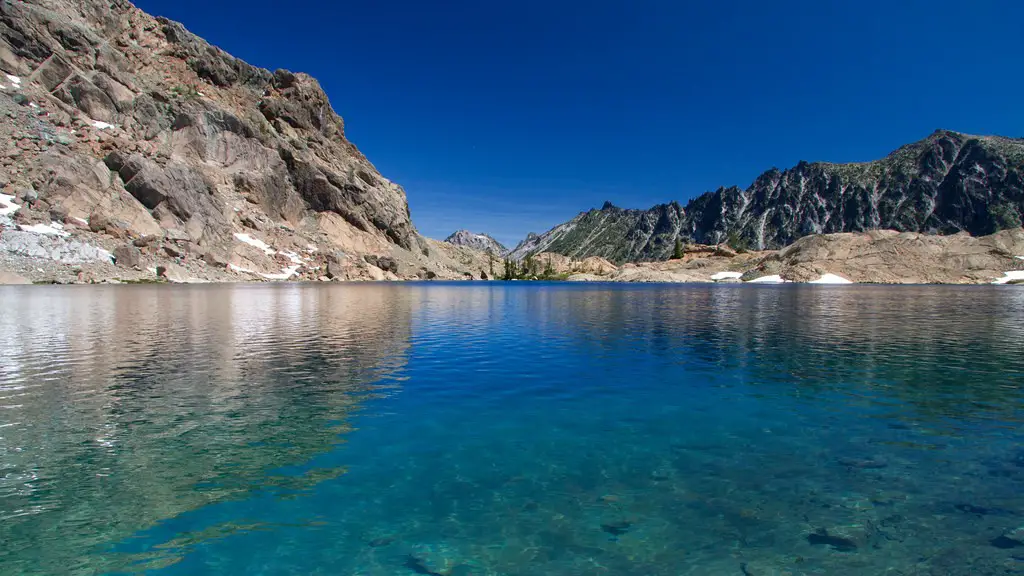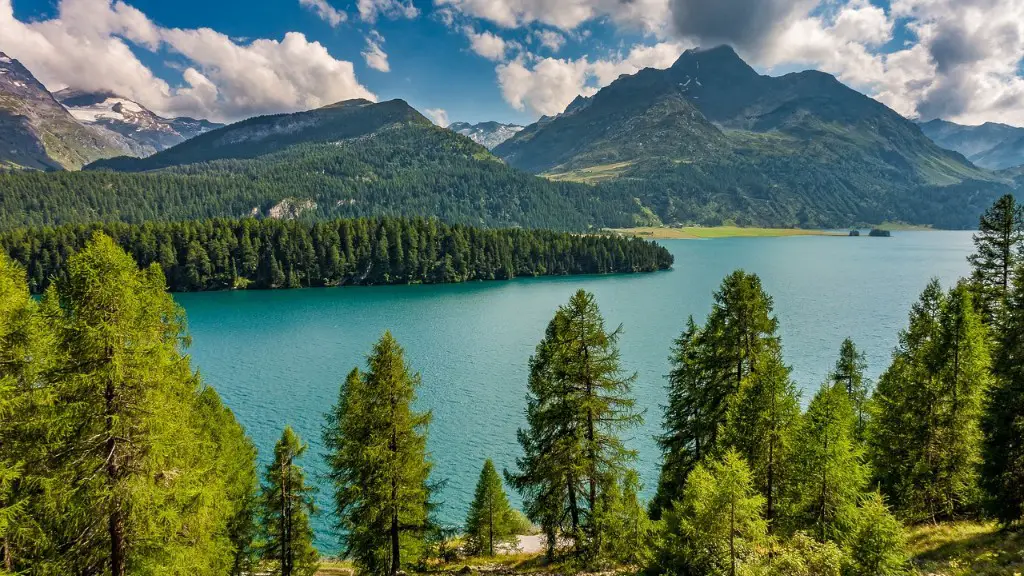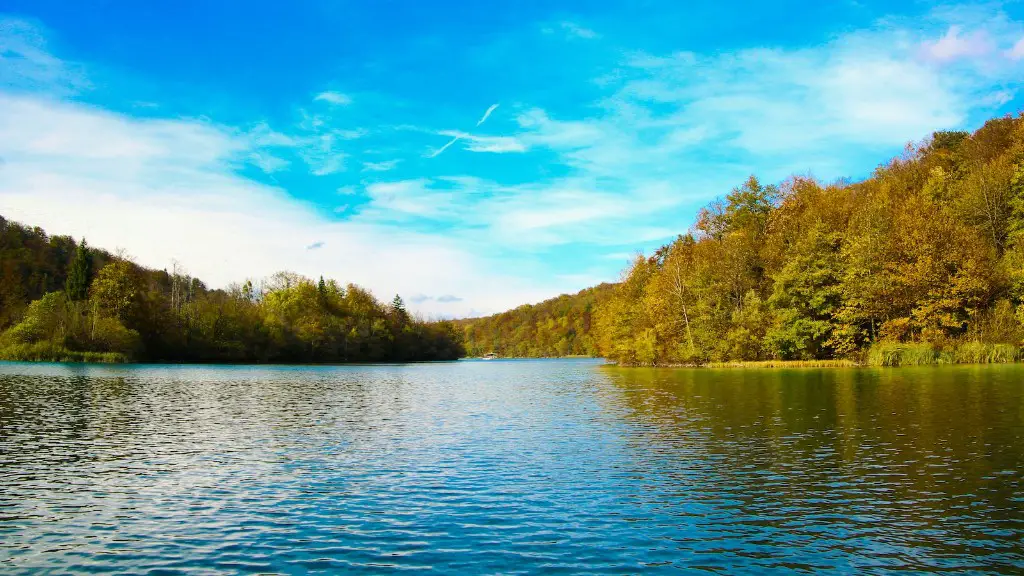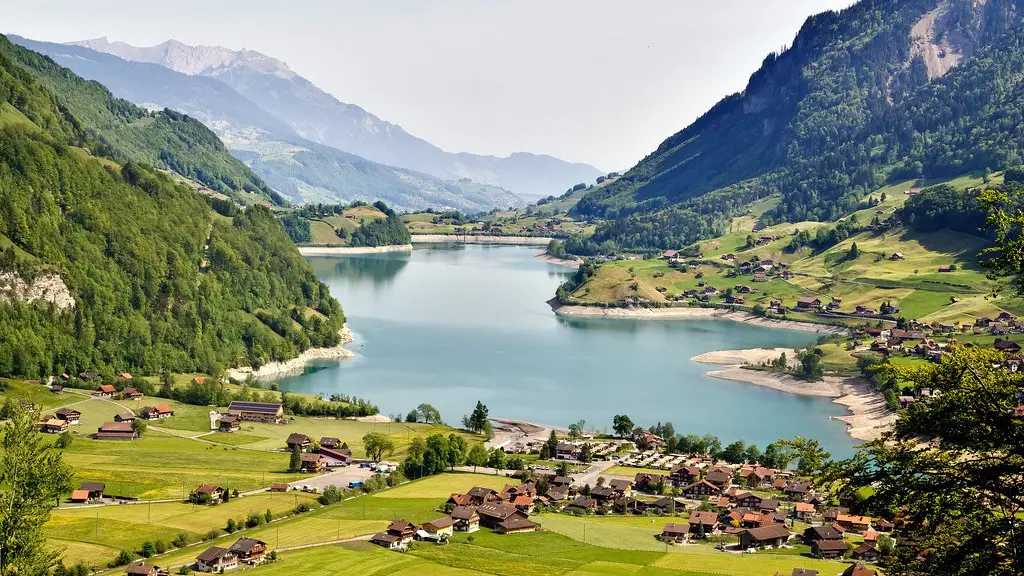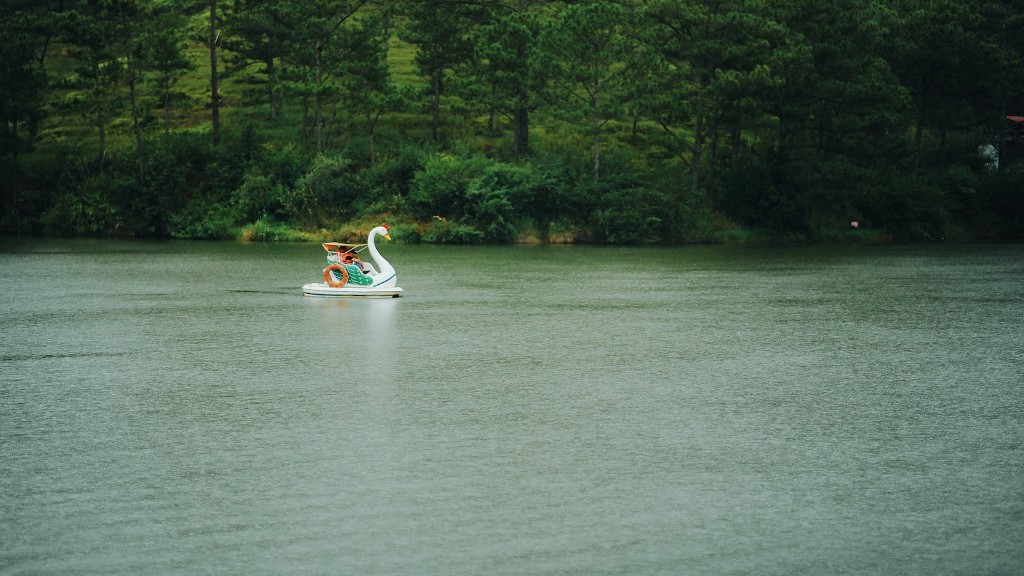The majestic Lake Victoria, Africa’s largest lake, spans an impressive 68,830 square kilometers and is located within the three countries of Uganda, Kenya, and Tanzania. From its lush, remote environment to its diverse marine life, there’s no doubt that Victoria is a sight to behold. But just how big is Lake Victoria and how did it become one of the most crucial bodies of water in Africa?
Before delving into Lake Victoria’s size, it’s important to consider how it came to be. While theories regarding its formation abound, the most accepted explanation is that it was created when a massive rift valley that was once the home of a much larger lake was shifted 10 million years ago. This would also explain the presence of its second-largest inlet, the Kagera River which drains into the south eastern part of the lake.
In terms of its size, Victoria is the largest lake in Africa and the second largest fresh water lake in the world after Lake Superior from North America. Its size can be attributed to the fact that it has over 3,000 islands, making it one of the lake’s largest groupings in the continent. To further enhance its grandeur, the lake is bordered by ethnic differences, languages, cultures, and religions which contribute to a unique Africa experience.
Not only is the lake a heavenly view, it is also home to more than 500 species of fish, making it an important source of food and livelihood for locals. Victoria’s shining example of nature’s magnificence also gives it potential to become an exceptional recreational and tourism hub. In fact, local and international groups have already expressed interest in transforming it into a waterway of investment opportunities and attractions, such as camping sites and beaches, that can compete with the other African lakes.
The importance of Lake Victoria to the countries involved and to Africa as a whole is hard to understate. From its impressive size to its significant contributions to eco-tourism and economic growth, it’s clear that this body of water drives the region’s prosperity. As such, all involved parties must undertake precautionary measures to ensure that the lake is sustainably managed, so that its beauty and grandeur can be preserved for countless more generations.
Environmental Impact
Due to industrial pollution, deforestation, and unsustainable fishing practices, Lake Victoria is at risk of ecological degradation and loss of biodiversity. Pollution stemming from industrial activities, agricultural runoff, and municipal wastewater leave unsafe levels of toxins in the lake and impair water storage, limit visibility, and reduce oxygen levels necessary for the survival of many species. To make matters worse, experts have also warned about the possibility of toxic algal blooms, which further compromise the health of the aquatic life.
The problem of deforestation is particularly concerning, as the watershed surrounding Lake Victoria is comprised of forests that provide nutrients and replenish the lake. Clearing for agriculture and illegal logging has already caused immense damage to these forests, which must be addressed as soon as possible.
Inefficient fishing methods and illegal fishing, along with overfishing, also threatens the lake. The local communities surrounding the lake exist in a typical subsistence system, depending heavily on it for food, especially carnivorous fish. These practices not only deplete the species but also inadvertently damage the aquatic environment.
Efforts to Protect the Lake
In light of this, the three countries bordering Lake Victoria have taken steps to protect it by forming the Lake Victoria Basin Commission. This intergovernmental organization develops strategies to promote the sustainable development of the basin, preserve its biodiversity, and reduce pollution. Specifically, the commission spearheaded the Lake Victoria Environmental Management Project, implemented by the World Bank, that combats the pollution problem and seeks to educate locals about the importance of conserving the lake. It is also making significant strides to get rid of illegal fishing practices by developing technologies to monitor real time fishing behaviors.
The establishment of the lake in the 1960s also ushered in the construction of the Nalubaale and Kiira dams, both of which are situated on the Victoria Nile Basin. The purpose of these dams was to boost hydroelectricity but they also serve to control the level of the lake and help sustain aquatic life.
By forming partnerships with NGOs and implementing several initiatives, the governments involved are slowly but surely ensuring that Lake Victoria is able to withstand the pressures of human activities. If all involved continue to prioritize conservation, the majestic Lake Victoria can remain a source of environmental and economic progress for years to come.
Significance of Tourism
The stunning landscape is not the only thing makingLake Victoria a prime tourist spot. Travellers to the area can also indulge in the unique blend of cultures and cuisines that surround the lake. Through responsible tourism practices, local communities can benefit firsthand from the influx of tourists, who in turn can explore this lake paradise in its unspoiled state.
One of the primary sources of income in these areas is boat touring, which provides an immense opportunity for sightseeing and activities like fishing, swimming and boat cruises. As the tourism industry grows, it will be essential to ensure that these activities are conducted in a way that avoids disruption to the livelihoods of local communities.
The tourism industry surrounding Lake Victoria is still in its infancy, yet already it has begun to provide a steady source of income for locals. It also presents an excellent opportunity for businesses to build a presence in the area, contribute to improved environmental health, and bring in more foreign investment. As such, by maintaining good environmental practices, Lake Victoria can have an even greater economic impact in the near future.
Lack of Access to Clean Water and Sanitation
The poor state of the lake and its consequences are not limited to environmental strains. Poverty, population growth, and the lack of access to clean water and sanitation are also major issues that residents of the area face daily. Millions of people in Tanzania, Uganda, and Kenya lack access to safe drinking water and consequently suffer from water-borne diseases.
Presently, the governments of the three countries are actively working to improve water access and sanitation systems. This includes building more water points and attempting to advance infrastructure in ways that guarantee a secure and reliable water supply. Obviously, this will help not only improve living standards in the region but also lead to further developments that can help protect the lake.
To make matters worse, the water quality of Lake Victoria has been compromised due to heavy modification of the lake’s shoreline. This has led to a host of problems related to reduced water volumes and increased sedimentation, in addition to the already concerning pollution levels.
Economic and Social Implications
The size of Lake Victoria reinforces the significance of its economic and social importance, as it serves as a major resource for the countries surrounding it. This makes it a very strategic asset, one that many countries and entrepreneurs have tried to seize. For example, in 2017, reports surfaced that an agreement was Brewing between Kenya, Uganda, and Tanzania to construct an oil pipeline from Kenya, through the lake and into Tanzania. Additionally, there are smaller, local initiatives such as fishing, tourism, and agricultural activities that help in providing employment, income opportunities, and sustainable growth for those in the region.
The social importance of Lake Victoria can’t be understated either. As the lake has been an important source of livelihood for many tribes in the basin, it also plays a crucial role in the region’s identity. As such, in recent years, an effort has emerged from specific groups and tribes to advocate for the preservation of the lake and the rich heritage of the basin.
Despite the efforts made to protect and restore Lake Victoria, much more must be done to ensure its sustainable management. With its unique combination of natural beauty and a vibrant cultural heritage, Victoria provides an opportunity to bring together many of the continent’s most fascinating elements.
The Nile River
The Nile River is one of the main tributaries that flows into Lake Victoria. As the longest river in Africa and the second longest in the world, the Nile River is a vital source of water for the lake. However, the river’s importance extends further than just the lake itself, as the Nile is the lifeblood that sustains the entire region.
The Nile River plays a role in giving the lake its tremendous size, as its primary source is Lake Victoria. It also serves as a source of transport for locals as well as a means to generate electricity from hydroelectric power plants. Last but not least, it is a major source of irrigation for agricultural activities in the countries along its course.
Unfortunately, the river has faced its fair share of challenges. Over-abstraction of the water and unequal redistributing of its resources has left many countries facing water shortages. The issue of damming has also created a complex network of political issues, as different countries battle to allocate the available water.
In recent years, the Nile River Basin Initiative has sought to implement regional regulations and projects to protect the river and its resources. Such efforts include the Nile-COMSTECH joint project which seeks to assist vulnerable communities and reduce water stress. It is hoped that if nations continue to act judiciously, the Nile River will be able to continue sustaining the region and its inhabitants.
Preserving the Mystery
Lake Victoria is home to several myths and legends. For instance, the people of Uganda believe that the lake used to be an enormous church in which their ancestors could worship. This is indicative of its spiritual significance in the region, as local tribes often visit the lake in search of answers from the gods.
Stories such as this are a compelling reason for preserving Lake Victoria, its fauna and flora. As a major contributor to African biodiversity, the lake should remain a symbol of the continent’s strength and fortitude.
Taking all of this into consideration, it’s not hard to see why Lake Victoria is considered Africa’s largest lake: its 68,830 square kilometers make it an impressive landmark. With its pristine landscape and spectacular marine life, it rings a bell in the hearts of Africa’s inhabitants and international visitors. And as long as all involved continue to prioritize its conservation, beautiful Lake Victoria will remain one of the continent’s greatest wonders.
